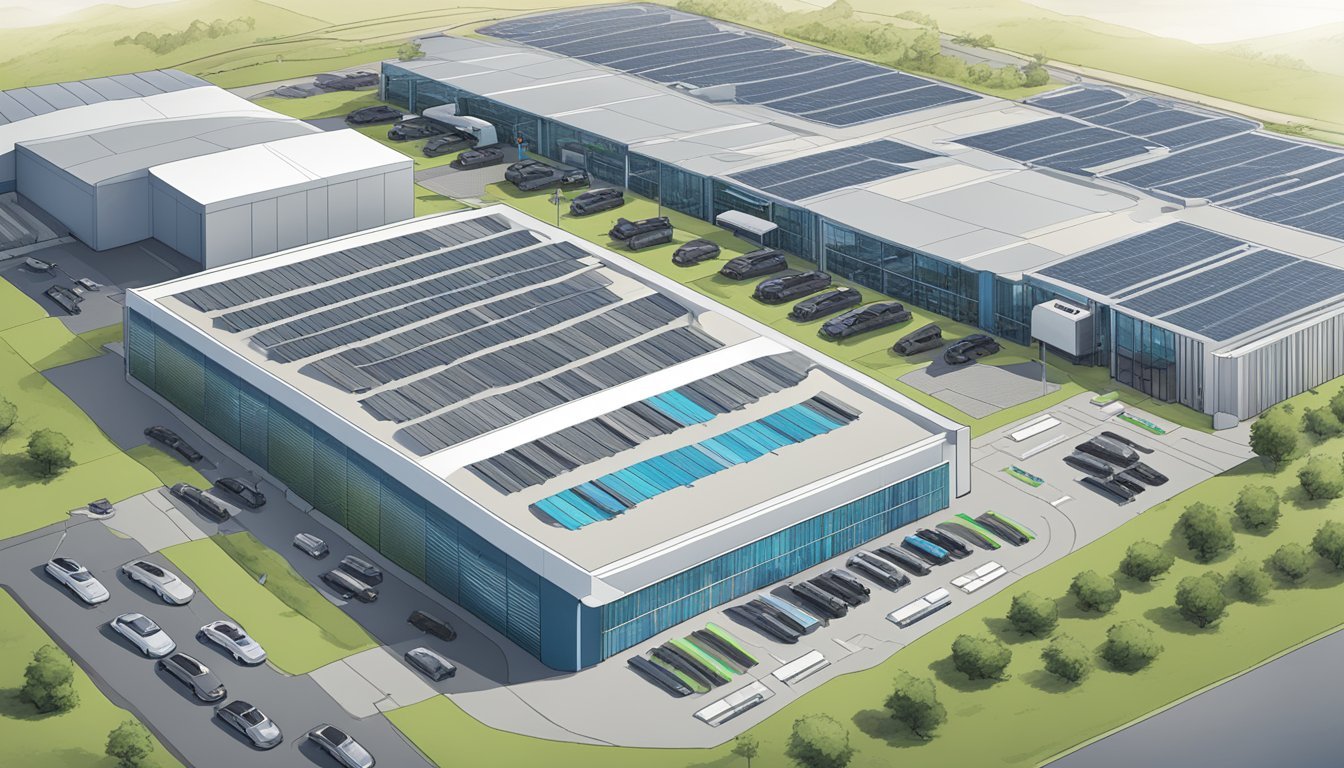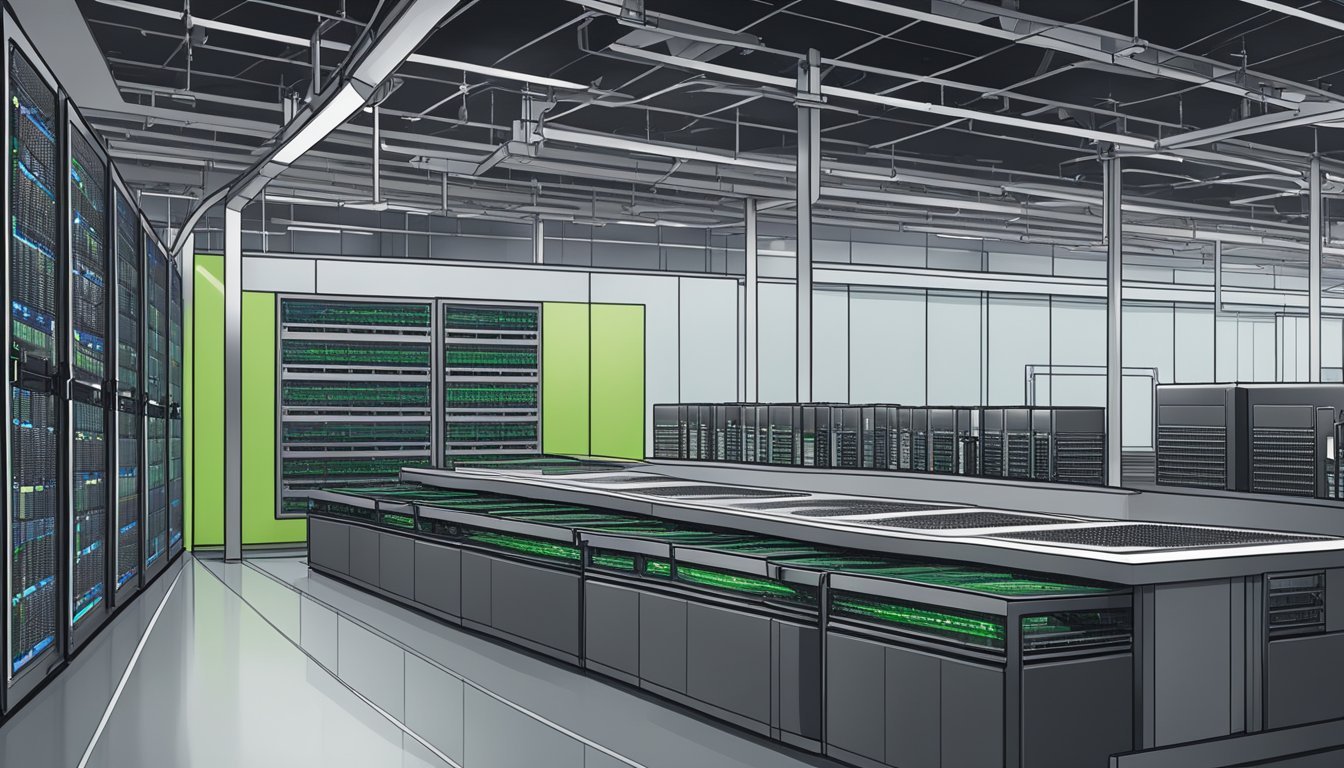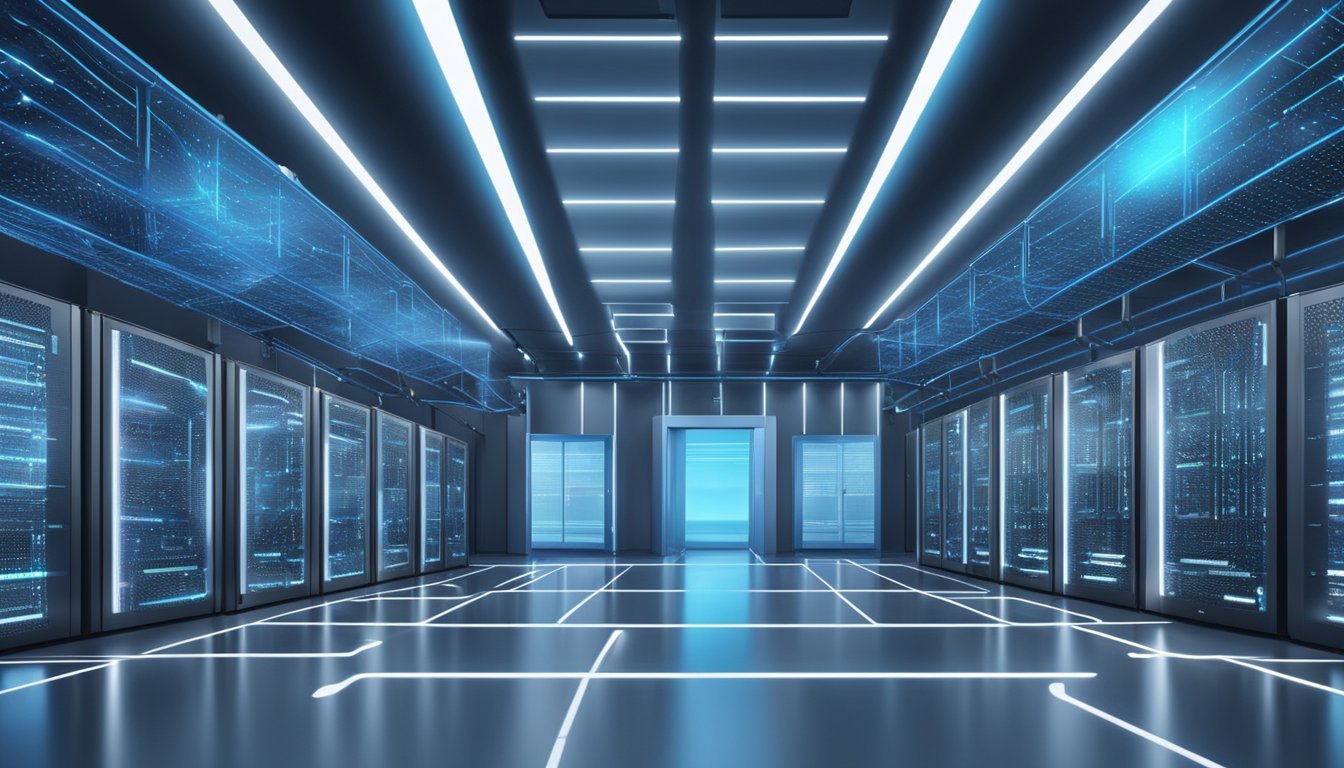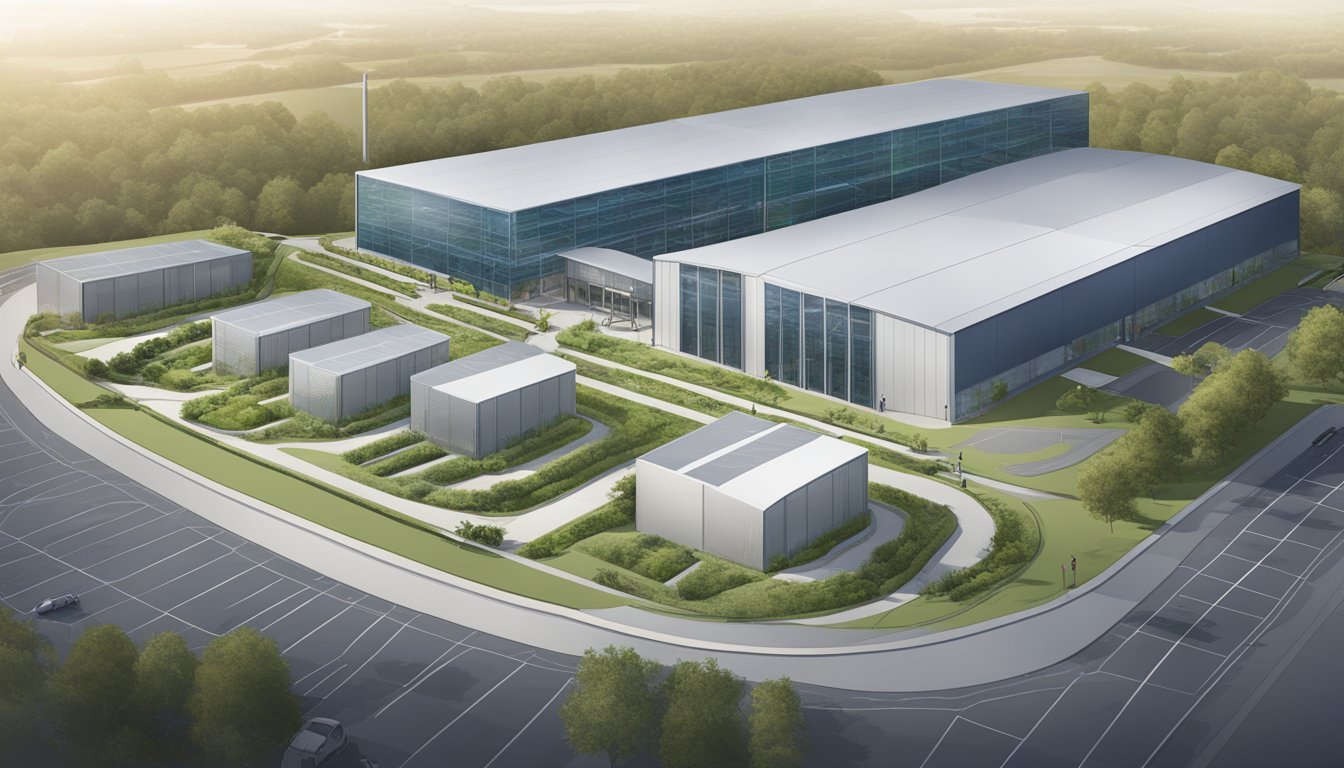Tesla Austin Data Center: Pioneering Tech Hub at Giga Texas!
Tesla is expanding its technological footprint with the construction of a groundbreaking data center at its headquarters in Austin, Texas. This new facility represents a significant step in the company's data processing capabilities and infrastructure development.
The Austin data center will be Tesla's first self-designed and constructed facility of its kind, marking a new era in the company's approach to data management and computational power. The project underscores Tesla's commitment to advancing its technological capabilities in-house, potentially enhancing its autonomous driving systems and other data-intensive operations.
Tesla's decision to build this data center in Austin aligns with the company's broader strategy of centralizing key operations at its Texas headquarters. The facility is expected to play a crucial role in supporting Tesla's growing data needs, particularly as the company continues to expand its electric vehicle production and develop cutting-edge technologies like its Full Self-Driving system.
Overview of Tesla's Presence in Austin
Tesla's footprint in Austin, Texas has expanded rapidly in recent years. The electric vehicle maker has established major manufacturing and technological operations in the area, cementing its status as a key player in the region's automotive and tech sectors.
Giga Texas Impact
Giga Texas, Tesla's massive manufacturing facility in Austin, opened in 2022. This 10-million-square-foot factory produces Model Y vehicles and Cybertrucks. It employs thousands of workers and has become a significant economic driver for the area.
The plant utilizes advanced manufacturing techniques and robotics. Its production capacitycontinues to ramp up, with aims to reach full output in the coming years.
Giga Texas also houses battery cell production, further integrating Tesla's supply chain. This vertical integration helps reduce costs and improve efficiency for the company's electric vehicle production.
Expansion of Operations
Beyond Giga Texas, Tesla is growing its presence in Austin through other initiatives. The company is developing a data center at its Austin headquarters, showcasing its commitment to technological advancement in the area.
This data center will likely support Tesla's artificial intelligence and autonomous driving efforts. It represents a significant investment in the company's computing infrastructure.
Tesla has also moved some corporate functions to Austin. This includes relocating its headquarters from California in 2021. The shift has brought additional jobs and investment to the region.
The company's expanding footprint in Austin extends to research and development activities. These efforts focus on improving electric vehicle technology and battery performance.
The Significance of Data Centers
Data centers play a crucial role in advancing automotive technology and artificial intelligence capabilities. These facilities provide the computing power needed to process vast amounts of data and train sophisticated AI models.
High-Performance Computing in Automotive Industry
Data centers enable automotive companies to leverage high-performance computing for various applications. Tesla's investment in data center infrastructure supports advanced vehicle design, autonomous driving development, and manufacturing optimization. The computational resources allow for complex simulations, reducing the need for physical prototypes and accelerating innovation cycles. Data centers also facilitate real-time data processing from connected vehicles, enhancing safety features and over-the-air updates.
Automotive data centers store and analyze telemetry data from millions of vehicles, providing insights for product improvements and predictive maintenance. This computing power is essential for training machine learning models used in autonomous driving systems, allowing vehicles to navigate complex environments safely.
Data Centers and AI Training
Data centers are the backbone of AI development, providing the necessary computational resources for training large-scale models. Tesla's focus on building custom data centers aligns with its AI ambitions, particularly in developing advanced driver assistance systems and full self-driving capabilities.
These facilities house specialized hardware like GPUs and custom chips optimized for AI workloads. The concentrated computing power enables faster training of neural networks on massive datasets, including real-world driving scenarios. Data centers also support continuous learning and improvement of AI models through iterative training processes.
By investing in proprietary data center infrastructure, Tesla aims to maintain a competitive edge in AI development. This approach allows for greater control over data security, processing efficiency, and scalability of AI training operations.
Elon Musk's Vision for Tesla's Data Handling
Elon Musk has outlined ambitious plans for Tesla's data handling capabilities, focusing on innovation and Full Self-Driving development. His vision aims to revolutionize autonomous driving through advanced data processing and AI technologies.
Innovation and Engineering Strategies
Tesla is constructing a new data center at its Giga Texas facility. Musk plans to add 500MW of power and cooling capacity to house Tesla's AI hardware and Nvidia chips. This expansion aligns with Tesla's strategy to enhance its data processing capabilities.
The company is also developing a custom Dojo supercomputer architecture. Tesla already operates a Dojo system in San Jose, California, and has expanded to an NTT Global Data Centers facility in Sacramento.
Musk's engineering approach emphasizes vertical integration. By designing custom chips and building proprietary data centers, Tesla aims to optimize its AI and autonomous driving technologies.
Full Self-Driving Development
Data collection plays a crucial role in Tesla's Full Self-Driving (FSD) development. The company leverages its fleet of vehicles to gather real-world driving data, which is essential for training and improving FSD algorithms.
Musk envisions a future Robotaxi network, heavily dependent on FSD technology. This ambitious goal requires extensive data processing and AI capabilities to ensure safe and reliable autonomous operation.
Tesla's data-driven approach to FSD development involves continuous learning and improvement. By analyzing vast amounts of driving data, the company aims to refine its autonomous driving systems and enhance safety features.
Tesla's Dojo Supercomputer Insider Look
Tesla's Dojo supercomputer represents a leap forward in high-performance computing for AI and machine learning. This custom-built system boasts impressive technical capabilities and aims to compete with other leading supercomputers in the industry.
Technical Capabilities of Dojo
Dojo utilizes custom-designed D1 chips based on a 7-nanometer fabrication process. These chips are arranged in a 5x5 array, forming a training tile that serves as the core of Dojo's computing power.
The system's architecture is optimized for AI and machine learning tasks, particularly for processing vast amounts of data from Tesla vehicles. This specialized design allows for efficient training of neural networks and rapid iteration of autonomous driving algorithms.
Dojo's processing capabilities are expected to significantly accelerate Tesla's development of self-driving technology. The supercomputer can handle complex simulations and analyze real-world driving data at unprecedented speeds.
Comparative Analysis With Other Supercomputers
Dojo aims to compete with other high-performance computing systems, including those using Nvidia H100 GPUs. While specific performance metrics are not publicly available, Tesla claims Dojo offers superior efficiency for their particular AI workloads.
Unlike general-purpose supercomputers, Dojo is tailored for Tesla's specific needs in autonomous driving development. This specialization may give it an edge in certain tasks compared to more versatile systems.
The custom hardware and software integration in Dojo potentially allows for better optimization and energy efficiency compared to off-the-shelf solutions. However, its performance in broader applications beyond Tesla's focus areas remains to be seen.
Dojo's true capabilities and advantages will become clearer as more details are released and independent benchmarks are conducted.
Design and Infrastructure of Austin Data Center
Tesla's Austin data center incorporates cutting-edge design elements and infrastructure to support high-performance computing needs. The facility emphasizes energy efficiency and innovative cooling solutions to maximize operational capabilities.
Architecture and Layout Designs
The Austin data center features a robust and scalable architecture. Its layout is optimized for efficient power distribution and thermal management. The building utilizes a modular design, allowing for easy expansion as computing demands grow.
Server racks are arranged in hot and cold aisle configurations to improve airflow. The facility also incorporates redundant power systems and multiple network connections to ensure high availability. Security measures include biometric access controls and 24/7 surveillance.
Cooling Systems and Energy Efficiency
Tesla's data center employs advanced cooling technologies to maintain optimal operating temperatures. The facility uses a combination of air and liquid cooling systems. Cold plate technology directly cools processors, while in-row cooling units manage ambient temperatures.
Energy efficiency is a key focus. The center utilizes renewable energy sources, including on-site solar panels. Smart power management systems optimize electricity usage. Heat recycling systems capture and repurpose waste heat, further improving overall efficiency.
The cooling infrastructure includes:
Economizers for free cooling when outside temperatures permit
Variable speed fans to adjust airflow as needed
Hot aisle containment to prevent mixing of hot and cold air
These systems work together to minimize power consumption while maintaining peak performance.
Integration With Global Networks
Tesla's Austin data center serves as a critical hub in the company's expanding global network. Its connectivity extends far beyond Texas, linking key facilities and enabling seamless data flow across continents.
Interconnectivity and Data Flow
The Austin data center connects to Tesla's existing infrastructure in California and overseas locations. High-speed fiber optic links facilitate real-time data transfer between manufacturing sites, research centers, and Supercharger stations worldwide. This robust network supports Tesla's operations, from vehicle production to energy management systems.
Advanced routing algorithms optimize data traffic, ensuring efficient communication between facilities. The center also incorporates edge computing capabilities, processing data closer to its source for faster response times and reduced latency.
Beyond Austin: Sacramento and Shanghai
Tesla's data center expansion includes facilities in Sacramento and Shanghai. The Sacramento site, formerly used by X Corp, now houses some of Tesla's computing resources. This strategic location on the West Coast complements the Austin hub, providing redundancy and improved service for the western United States.
In Shanghai, China, Tesla operates another data center supporting its Gigafactory and regional operations. This facility adheres to local data regulations while maintaining secure connections to the global Tesla network. The Shanghai center plays a crucial role in managing production data, supply chain logistics, and vehicle telemetry for the Asian market.
Employment and Economic Impact
Tesla's presence in Austin has generated substantial job opportunities and economic growth for the region. The company's investments have rippled through the local economy, creating both direct and indirect employment across various sectors.
Job Creation and Local Economy
Tesla's Gigafactory in Austin has been a significant driver of employment, creating over 15,000 jobs in the area. The company has invested heavily in the region, with estimates suggesting a total economic impact of $2 billion since 2020. Tesla's workforce has grown rapidly, surpassing initial projections of 5,000 jobs.
The economic benefits extend beyond direct employment. Tesla has contributed $15 million in taxes to Travis County and over $49 million to Del Valle ISD. These funds support local infrastructure and education initiatives.
Tesla's presence has also attracted suppliers and partners, further boosting the local job market. The company's investment in the region is expected to exceed $10 billion, including ancillary facilities.
Roles in the Data Center Ecosystem
While specific information about Tesla's data center in Austin is limited, data centers typically create a diverse range of job opportunities. These roles often include:
Senior Engineering Program Managers
IT specialists
Network engineers
Security professionals
Facilities managers
Data center jobs often require specialized skills and offer competitive salaries. Tesla's Factory Engineering Team likely plays a crucial role in maintaining and optimizing data center operations.
Job postings for Tesla's Austin facilities frequently seek candidates with expertise in advanced manufacturing, software engineering, and data analysis. These positions support the company's innovative approach to vehicle production and energy solutions.
Collaboration and External Partnerships
Tesla's Austin data center project involves strategic collaborations with industry leaders and engages various stakeholders. These partnerships aim to enhance the facility's capabilities and foster innovation in data processing and artificial intelligence.
Technical Workshops and Events
Tesla organizes technical workshops and events to share knowledge and attract top talent to its Austin data center project. These gatherings focus on cutting-edge technologies like AI, machine learning, and high-performance computing. Industry experts and Tesla engineers lead sessions on topics such as data center design, energy efficiency, and scalable infrastructure.
The company also participates in local tech conferences, showcasing its advancements in data processing and AI applications for autonomous driving. These events serve as platforms for Tesla to network with potential partners and recruit skilled professionals for its growing data center team.
Working With Stakeholders and Companies
Tesla collaborates with key stakeholders and companies to support its Austin data center development. The company engages with local utilities to ensure reliable power supply and explore renewable energy options. Tesla works closely with Digital Realty and Switch, leveraging their expertise in data center infrastructure and management.
Partnerships with tech giants like Amazon provide Tesla access to cloud computing resources and advanced tools for data analysis. These collaborations enable Tesla to optimize its data center operations and accelerate AI development for its autonomous driving systems.
Tesla also coordinates with X Corp, formerly Twitter, to explore potential synergies in data processing and social media analytics. This partnership aims to enhance Tesla's understanding of consumer behavior and market trends, informing product development and marketing strategies.
Future of Transportation and Autonomous Vehicles
Tesla's Austin data center plays a pivotal role in advancing autonomous driving technology and revolutionizing transportation. The facility's cutting-edge infrastructure supports the development of self-driving vehicles and innovative observation methods.
Autonomous Driving Technology
Tesla's autonomous driving systems rely on sophisticated artificial intelligence algorithms processed by the Austin data center. The facility houses powerful GPUs and custom-designed chips to handle the massive computational demands of self-driving technology. These systems analyze vast amounts of real-world driving data to improve decision-making capabilities.
Tesla's neural networks learn from millions of miles driven, enhancing their ability to navigate complex traffic scenarios. The company continually refines its Full Self-Driving (FSD) software, pushing updates to vehicles over-the-air. This iterative approach allows for rapid improvements in autonomous capabilities.
Drone Flyovers and Observation
Tesla utilizes drone technology for aerial surveillance and data collection at its Austin facility. These unmanned aerial vehicles provide valuable insights into construction progress, site logistics, and security monitoring. Drones equipped with high-resolution cameras capture detailed imagery of the data center and surrounding areas.
The company leverages this aerial data to optimize operations and enhance safety measures. Drone-captured footage also aids in assessing environmental impact and planning future expansions. Tesla's use of drone technology demonstrates its commitment to innovative monitoring solutions and efficient facility management.









